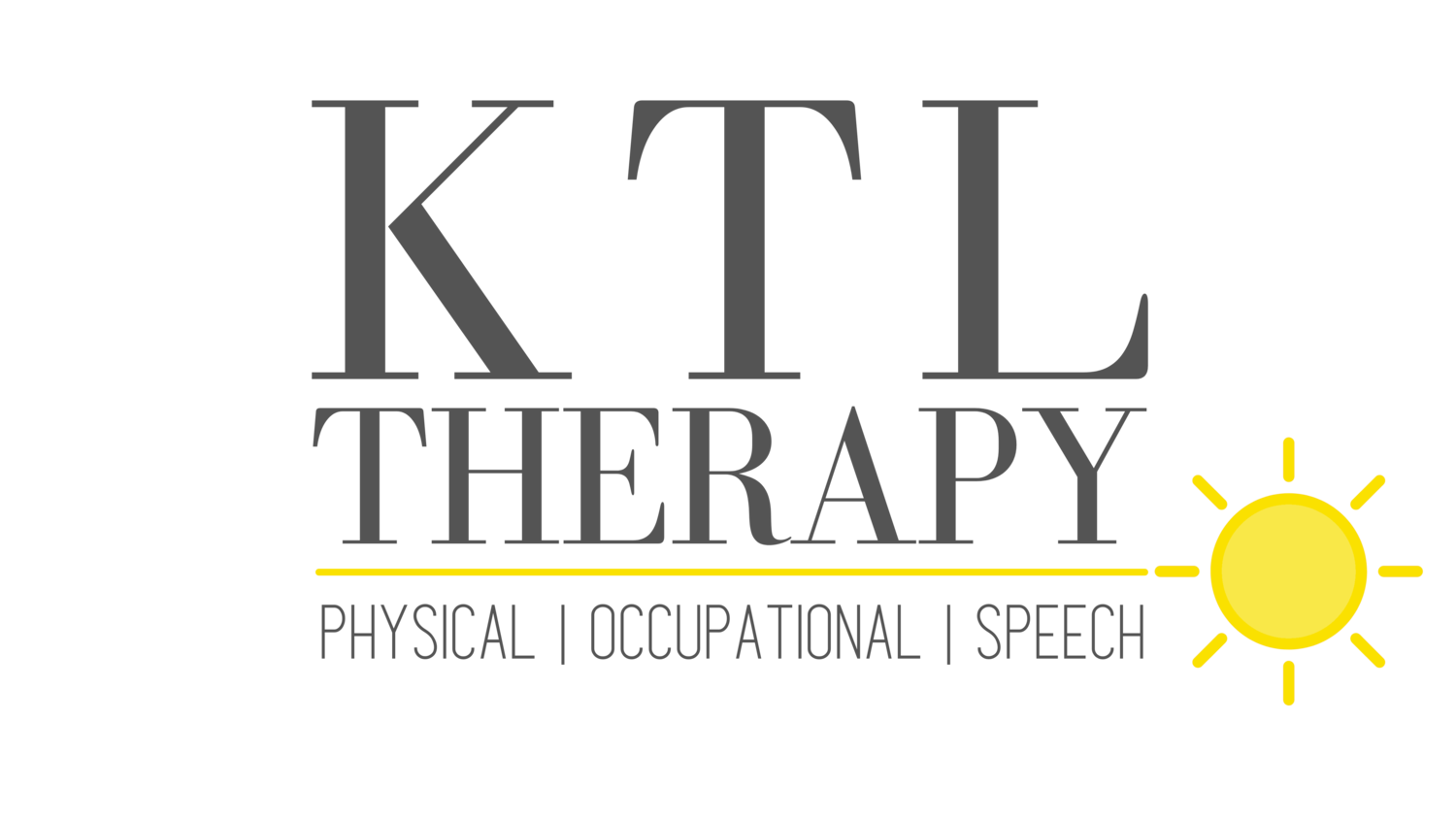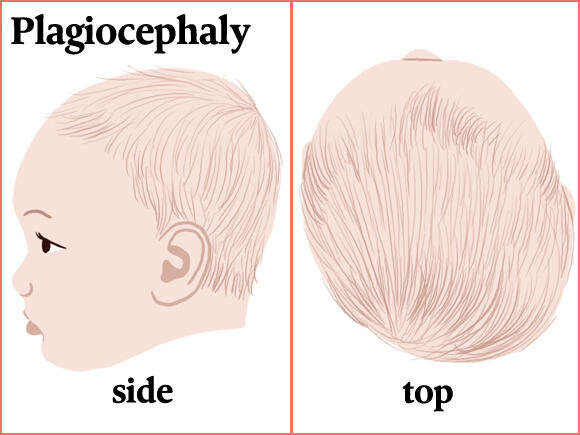Preventing Plagiocephaly (aka “Flat Head" Syndrome”)
Plagiocephaly, or “Flat Head Syndrome,” is a common and treatable condition seen in many infants, but it can be alarming when first spotted by parents.
When you have a new baby, a myriad of concerns are constantly running through your head. Is he getting enough to eat? Is her crib safe? Is that poop a normal color? Is my baby’s head getting flat?
Plagiocephaly is the flattening seen on the back of a baby’s head, often on one side, as a result of prolonged pressure. In more severe cases of plagiocephaly, additional deformity of the skull can be seen such as bumping out of the forehead or asymmetrical alignment of the ears.
Since the 1990’s, the American Academy of Pediatrics (AAP) has promoted the “Back to Sleep” campaign, which recommends that infants should only sleep on their backs. Though this has reduced the incidence of sudden infant death syndrome (SIDS), head and neck issues like plagiocephaly have increased.
How Does Plagiocephaly Occur?
A flat spot on a baby’s head can develop in a few different ways.
Flattening can happen in the womb if the head is positioned against the pelvis for an extended period or if there is less space for the baby to easily change positions, such as in the case of twins or triplets. A baby can also appear to have a misshapen head following delivery, but this will generally only last a few days.
More commonly, plagiocephaly develops after birth when the baby is spending a significant amount of time on his or her back. A newborn often spends anywhere from 14-18 hours a day sleeping, and if a parent is following the AAP’s guidelines, that means lying on their back in a crib or bassinet. And if baby is spending a significant amount of time in her car seat, swing, or bouncy seat, the entirety of her day could be spent on her back!
Furthermore, an infant’s skull is designed to be soft and pliable to allow for rapid growth in the first few months of life. This “soft head” combined with countless hours lying on his back is the perfect recipe for the development of plagiocephaly.
How Do You Spot Plagiocephaly?
● The center of the head looks flat or less rounded than it once did
● One side of the back of the head looks flatter than the other side
● Your baby has a bald spot on one part of their head
● Your baby strongly prefers keeping their head turned in one direction (to the right or to the left) whenever they are lying on their backs
● One ear looks flattened or like it is pushed further forward than the other ear
● One side of the forehead looks like it is bulging out further than the other side
● Asymmetry of your baby’s eyes, cheeks, or jaw (in severe cases)
How Do You Prevent Plagiocephaly?
Although it might seem like the development of a flat spot is inevitable in the newborn phase, you can use the following tips and positioning strategies to prevent plagiocephaly (and promote appropriate development) in your baby.
● Tummy Time: By practicing 30-60 minutes of tummy time per day in the first few months, your baby will be spending less time on his back and also be developing the neck strength to freely move his head around. Tummy time can be done on the floor, over a pillow/towel roll, or on a parent’s chest.
● Sidelying: During awake time on the floor, support your baby on her side with your hand or by placing a rolled towel behind her back. Encourage reaching for toys in this position and make sure to switch sides after a few minutes!
● Active head movement: When your baby is starting to track objects, encourage him to actively turn his head to the right and left to follow a toy or your face. He may need some help from you until he gets stronger!
● Avoid spending time in “containers”: Avoid spending more than an hour or two a day in a car seat, swing, or bouncy seat, if possible. Try to hold your baby more often or use a baby carrier if you need to get things done around the house! (Please note that this does not include bassinets or cribs for sleeping).
● Alternating sleep position: Try rotating which end you lie your baby’s head down in the bassinet or crib for sleep. If your baby strongly prefers rotating her head in one direction during sleep despite the direction she is placed, try to position her head in the other direction once she falls asleep.
● Avoid “plagiocephaly” pillows: These are being heavily marketed on Facebook and other online sites, but these are not approved for safe sleep.
The good news is that as a baby grows and develops in the first few months of life, he will begin to spend less time on the back of his head without any effort from you!
By 4-6 months of age, your baby should be rolling onto his tummy independently during floor play and may begin sitting independently around 6 months of age.
What Should I Do if I Have Continued Concerns?
Your doctor may recommend a cranial helmet which helps promote proper molding of your baby’s head as he grows.
Although plagiocephaly may be prevented with the recommendations discussed above, it can persist in some babies and may grow quite severe. Despite an alarming appearance, severe plagiocephaly is considered a cosmetic concern and it should not affect your child’s development.
Your doctor may recommend a cranial helmet which would help to promote proper molding of your baby’s head as they grow. Your doctor may also refer you to a physical therapist to address plagiocephaly, especially if they also notice torticollis, or neck tightness, in your baby.
Torticollis and plagiocephaly occur together frequently and a physical therapist can show you neck stretching and strengthening activities to help address both of these issues. Your child’s pediatrician should screen for plagiocephaly and torticollis at early well-child checks, but always voice any concerns you might have!
Early identification and treatment of plagiocephaly and torticollis results in a better outcome for your baby. Contact a KTL Physical Therapist today!




